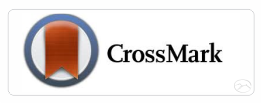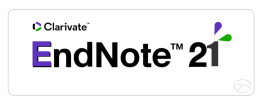War journalism in the digital age: The interaction between professionals and user-generated content
Publicado 2024-12-30
Palabras clave
- Audiovisual communication, media interaction, digital content, journalist strategies, media analytics.
Cómo citar
Derechos de autor 2025 Lesia Lysenko

Esta obra está bajo una licencia internacional Creative Commons Atribución 4.0.
Resumen
The research aims to study the attitudes of professional journalists to user-generated audiovisual content and to understand its role in war coverage. A cross-sectional study was used to answer the research questions using a mixed-methods approach. The approach incorporated a close-ended questionnaire and in-depth interviews with 12 professional journalists. The findings showed that user-generated audiovisual content is widely used in war journalism to complement news stories, fact-checking, publishing, research, and real-time reporting. Telegram and Facebook are extensively utilised to source user-generated audiovisual content. To verify user-generated audiovisual content, consulting with experts, cross-referencing official sources, geolocation, reverse image search, and implementation of visual verification platforms are used. Both benefits and challenges characterise user-generated audiovisual content. For example, these benefits include enhancement of the ability to cover stories in inaccessible areas, providing unique perspectives on events, more effective engagement with the audience, and seeding up the news. At the same time, the findings showed that most participants face difficulties verifying the authenticity of user-generated audiovisual content, particularly challenges in maintaining professional standards, technical problems, the necessity to verify the authenticity, and the use of sensitive content. The recommendations on integrating user-generated audiovisual content in war news reporting were developed to maximise the effect of user-generated audiovisual content. Some include using user-generated audiovisual content to report on war zones, avoiding user-generated content as the sole source, implementing legal standards for using user-generated content, avoiding misinterpretation, introducing fact-checking tools, and assessing source credibility. The outcomes can be implied in journalism, media studies, and conflict reporting.
Descargas
Citas
- Aal, K., Rüller, S., Krüger, M., Rohde, M., Tadic, B., Wulf, V. (2024). Political Activism on Social Media in Conflict and War. In C. Reuter (Ed), Information Technology for Peace and Security: IT Applications and Infrastructures in Conflicts, Crises, War, and Peace (pp. 411–433). Springer. https://doi.org/10.1007/978-3-658-44810-3_19
- Ahmadi, R., Yagoubi, H., & Hussaini, M. (2023). Examining the Relationship between Social Activism and Social Responsibility of Women in Preventing Domestic Violence: A Case Study of Panj Tan area of Mashhad Province, Iran. Journal of Contemporary Philosophical and Anthropological Studies, 1(2). https://doi.org/10.59652/jcpas.v1i2.92
- Babenko, V., Romaniuk, V., Viytovych, T., Zhmaka, Y., & Ovchar, Y. (2024). Social media and public opinion formation in times of war: A case study from Ukraine. Amazonia Investiga, 13(81), 187–196. https://doi.org/10.34069/AI/2024.81.09.15
- Basile, V., Brandão, A. & Ferreira, M. (2024). Does user-generated content influence value co-creation in the context of luxury fashion brand communities? Matching inclusivity and exclusivity. Italian Journal of Marketing, 2024, 419–444. https://doi.org/10.1007/s43039-024-00103-9
- Berg, J., Fagerholm, A., & Strandberg, K. (2024). Quality User-Generated Content? A Case Study of the Quality of Online News Comments on the Site of Finnish Public Service Broadcaster Yle. Journalism Practice, 1-22. https://doi.org/10.1080/17512786.2024.2329759
- Bhinder, N. V. (2020). Formation of information literacy among future officers at the English lessons. Scientific Bulletin of M. P. Drahomanov National Pedagogical University. Series 5: Pedagogical Sciences: Realities and Prospects, 78, 44–47. https://doi.org/10.31392/NPU-nc.series5.2020.78.09
- Binder, J. F., & Kenyon, J. (2022). Terrorism and the internet: How dangerous is online radicalization?. Frontiers in psychology, 13, 997390. https://doi.org/10.3389/fpsyg.2022.997390
- Borges-Tiago, M. T., Tiago, F., & Cosme, C. (2019). Exploring users’ motivations to participate in viral communication on social media. Journal of Business Research, 101, 574–582. https://doi.org/10.1016/j.jbusres.2018.11.011
- Breve, B., Caruccio, L., Cirillo, S., Deufemia, V., & Polese, G. (2024). Analyzing the worldwide perception of the Russia-Ukraine conflict through Twitter. Journal of Big Data, 11, 76. https://doi.org/10.1186/s40537-024-00921-w
- Cervi, L. (2019). Citizen journalism and user generated content in mainstream media. New dialogic form of communication, user-engagement technique or free labor exploitation?. Revista De Comunicação Dialógica, (1), 105–122. https://doi.org/10.12957/rcd.2019.41871
- dos Santos, M.L.B. (2022). The “so-called” UGC: an updated definition of user-generated content in the age of social media. Online Information Review, 46(1), 95–113. https://doi.org/10.1108/OIR-06-2020-0258
- Fernández-Castrillo, C., & Ramos, C. (2023). Social web and photojournalism: User-generated content of the Russo-Ukrainian war. Comunicar, 77(31), 81–91. https://doi.org/10.3916/C77-2023-07
- Gârdan, I. P., Mauri, A., Dumitru, I., Gârdan, D. A., Maican, S. Ș., & Moise, D. (2022). User-Generated Multimedia Content Impact on the Destination Choice: Five Dimensions of Consumer Experience. Electronics, 11(16), 2570. https://doi.org/10.3390/electronics11162570
- Geiß, S. (2022). The Agenda-Setting-Effects of News Factor Exposure: A Field Study Comparing the Transmission Paths and Impact of Issue Exposure and News Factor Exposure. Sage Open, 12(2). https://doi.org/10.1177/21582440221091259
- Geissler, D., Bär, D., Pröllochs, N., & Feuerriegel, S. (2023). Russian propaganda on social media during the 2022 invasion of Ukraine. EPJ Data Science, 12, 35. https://doi.org/10.1140/epjds/s13688-023-00414-5
- Gruszynski Sanseverino, G., & De Lima Santos, M. F. (2021). Experimenting with user-generated content in Journalistic practices: adopting a user-centric storytelling approach during the covid-19 pandemic coverage in Latin America. Brazilian Journalism Research, 17(2), 244–279. https://doi.org/10.25200/BJR.v17n2.2021.1369
- Hamas Elmasry, M. (2024). Images of the Israel-Gaza War on Instagram: A Content Analysis of Western Broadcast News Posts. Journalism & Mass Communication Quarterly. https://doi.org/10.1177/10776990241287155
- Hasan, M. (2024). Russia-Ukraine Propaganda on Social Media: A Bibliometric Analysis. Journalism and Media, 5(3), 980–992. https://doi.org/10.3390/journalmedia5030062
- Kerkhof, A., & Münster, J. (2019). Detecting coverage bias in user-generated content. Journal of Media Economics, 32(3–4), 99–130. https://doi.org/10.1080/08997764.2021.1903168
- Kitsios, F., Mitsopoulou, E., Moustaka, E., & Kamariotou, M. (2022). User-Generated Content in Social Media: A Twenty-Year Bibliometric Analysis in Hospitality. Information, 13(12), 574. https://doi.org/10.3390/info13120574
- Kubin, E., Merz, P., Wahba, M., Davis, C., Gray, K., & Von Sikorski, C. (2024). Understanding news-related user comments and their effects: A systematic review. Frontiers Media, 9. https://doi.org/10.17615/qc51-8m76
- Kušen, E., & Strembeck, M. (2023). The Effects of Multiple Exposure to Highly Emotional Social Media Content During the Early Stages of the 2022 War in Ukraine. SN Computer Science, 4, 63. https://doi.org/10.1007/s42979-023-02080-w
- Leszczuk, M., Kobosko, M., Nawała, J., Korus, F., & Grega, M. (2023). “In the Wild” Video Content as a Special Case of User Generated Content and a System for Its Recognition. Sensors, 23(4), 1769. https://doi.org/10.3390/s23041769
- Liaropoulos, A. N. (2023). Victory and Virality: War in the Age of Social Media. Georgetown Journal of International Affairs, 24(2), 198–203. https://dx.doi.org/10.1353/gia.2023.a913646
- Lindgren, E., Lindholm, T., Vliegenthart, R., Boomgaarden, H. G., Damstra, A., Strömbäck, J., & Tsfati, Y. (2024). Trusting the Facts: The Role of Framing, News Media as a (Trusted) Source, and Opinion Resonance for Perceived Truth in Statistical Statements. Journalism & Mass Communication Quarterly, 101(4), 981–1004. https://doi.org/10.1177/10776990221117117
- Maathuis, C., & Kerkhof, I. (2023). The first two months in the war in Ukraine through topic modeling and sentiment analysis. Regional Science Policy & Practice, 15(1), 56–75. https://doi.org/10.1111/rsp3.12632
- Maschmeyer, L., Abrahams, A., Pomerantsev, P., & Yermolenko, V. (2023). Donetsk don’t tell – ‘hybrid war’ in Ukraine and the limits of social media influence operations. Journal of Information Technology & Politics, 22(1), 49–64. https://doi.org/10.1080/19331681.2023.2211969
- Masip, P., Ruiz-Caballero, C., & Suau, J. (2019). Active audiences and social discussion on the digital public sphere. Review article. Profesional De La información, 28(2). https://doi.org/10.3145/epi.2019.mar.04
- Marukhovskа-Kartunova, O., Marukhovskyi, O., Aleksandrova, M., Ivanova, I., & Lebedenko, N. (2023). Digital journalism and the role of social media in shaping public perception of Russian aggression in Ukraine. Amazonia Investiga, 12(69), 143–153. https://doi.org/10.34069/AI/2023.69.09.12
- Meral, K. Z. & Meral, Y. (2021). The role of social media in Arab Spring. e-Journal of New Media, 5(1), 26–34. https://doi.org/10.17932/IAU.EJNM.25480200.2021/ejnm_v5i1003
- Miconi, A. (2020). News from the Levant: A Qualitative Research on the Role of Social Media in Syrian Diaspora. Social Media + Society, 6(1). https://doi.org/10.1177/2056305119900337
- Nah, S., Luo, J., Akçakır, G., Wu, X., Nam, G., & Kim, S. (2024). Revisiting citizen journalism scholarship in the Web Era (1994-2023): Past, present, and prospect. Journalism. https://doi.org/10.1177/14648849241247972
- Okwilagwe, E. A., & Jinadu, A. T. (2023). Knowledge, Perception, Utilisation and Attitude Towards Social Media-Based Learning as Predictors of Students’ Academic Achievement in Geography. EIKI Journal of Effective Teaching Methods, 1(4). https://doi.org/10.59652/jetm.v1i4.66
- Peña-Fernández, S., Larrondo-Ureta, A., & Agirreazkuenaga, I. (2024). Mediatised Participation: Citizen Journalism and the Decline in User-Generated Content in Online News Media. Social Sciences, 13(5), 266. https://doi.org/10.3390/socsci13050266
- Popovic, M., & Kozar, S. (2023). Defining the concept of terrorism from the antropological perspective. Journal of Contemporary Philosophical and Anthropological Studies, 1(1). https://doi.org/10.59652/jcpas.v1i1.56
- Salonen, M., Olbertz-Siitonen, M., Uskali, T., & Laaksonen, S. M. (2022). Conversational Gatekeeping—Social Interactional Practices of Post-Publication Gatekeeping on Newspapers’ Facebook Pages. Journalism Practice, 17(9), 2053–2077. https://doi.org/10.1080/17512786.2022.2034520
- Sang, V. M., Thanh, T. N. P., Gia, H. N., Nguyen Quoc, D., Long, K. L., & Yen, V. P. T. (2024). Impact of user-generated content in digital platforms on purchase intention: the mediator role of user emotion in the electronic product industry. Cogent Business & Management, 11(1), 2414860. https://doi.org/10.1080/23311975.2024.2414860
- Selvarajah, S., & Fiorito, L. (2023). Media, Public Opinion, and the ICC in the Russia-Ukraine War. Journalism and Media, 4(3), 760–789. https://doi.org/10.3390/journalmedia4030048
- Shahbazi, M., & Bunker, D. (2024). Social media trust: Fighting misinformation in the time of crisis. International Journal of Information Management, 77, 102780. https://doi.org/10.1016/j.ijinfomgt.2024.102780
- Shahbaznezhad, H., Dolan, R., & Rashidirad, M. (2021). The Role of Social Media Content Format and Platform in Users’ Engagement Behavior. Journal of Interactive Marketing, 53(1), 47–65. https://doi.org/10.1016/j.intmar.2020.05.001
- Stewart, E. (2021). Detecting Fake News: Two Problems for Content Moderation. Philosophy & Technology, 34, 923–940. https://doi.org/10.1007/s13347-021-00442-x
- Sykora, M., Elayan, S., Hodgkinson, I. R., Jackson, T. W., & West, A. (2022). The power of emotions: Leveraging user generated content for customer experience management. Journal of Business Research, 144, 997–1006. https://doi.org/10.1016/j.jbusres.2022.02.048
- Truyens, P., & Picone, I. (2021). Audience Views on Professional Norms of Journalism. A Media Repertoire Approach. Journalism and Media, 2(2), 258–274. https://doi.org/10.3390/journalmedia2020015
- Yadav, J., Singh, K., Rana, N.P. and Dennehy, D. (2024). Social media as a behavior depolarizer: evidence from Russia-Ukraine conflict. Information Technology & People. https://doi.org/10.1108/ITP-12-2022-0972
- Yamamoto, M., Nah, S., & Choung, H. (2022). Consumption and Production of User-Generated Content, Credibility, and Political Participation. Communication Studies, 73(1), 1–16. https://doi.org/10.1080/10510974.2022.2026428
- Yeh, E., & Swinehart, N. (2020). Social media literacy in L2 environments: navigating anonymous user-generated content. Computer Assisted Language Learning, 35(8), 1731–1753. https://doi.org/10.1080/09588221.2020.1830805
- Zasiekin, S., Kuperman, V., Hlova, I., & Zasiekina, L. (2022). War stories in social media: Personal experience of Russia-Ukraine war. East European Journal of Psycholinguistics, 9(2), 160–170. https://doi.org/10.29038/eejpl.2022.9.2.zas
- Zecchinon, P., & Standaert, O. (2024). The War in Ukraine Through the Prism of Visual Disinformation and the Limits of Specialized Fact-Checking. A Case-Study at Le Monde. Digital Journalism, 1–19. https://doi.org/10.1080/21670811.2024.2332609
- Zhu, X., Lang, M., & Dietl, H. M. (2023). Content Quality Assurance on Media Platforms with User-Generated Content. Journal of Theoretical and Applied Electronic Commerce Research, 18(3), 1660–1686. https://www.mdpi.com/0718-1876/18/3/84











